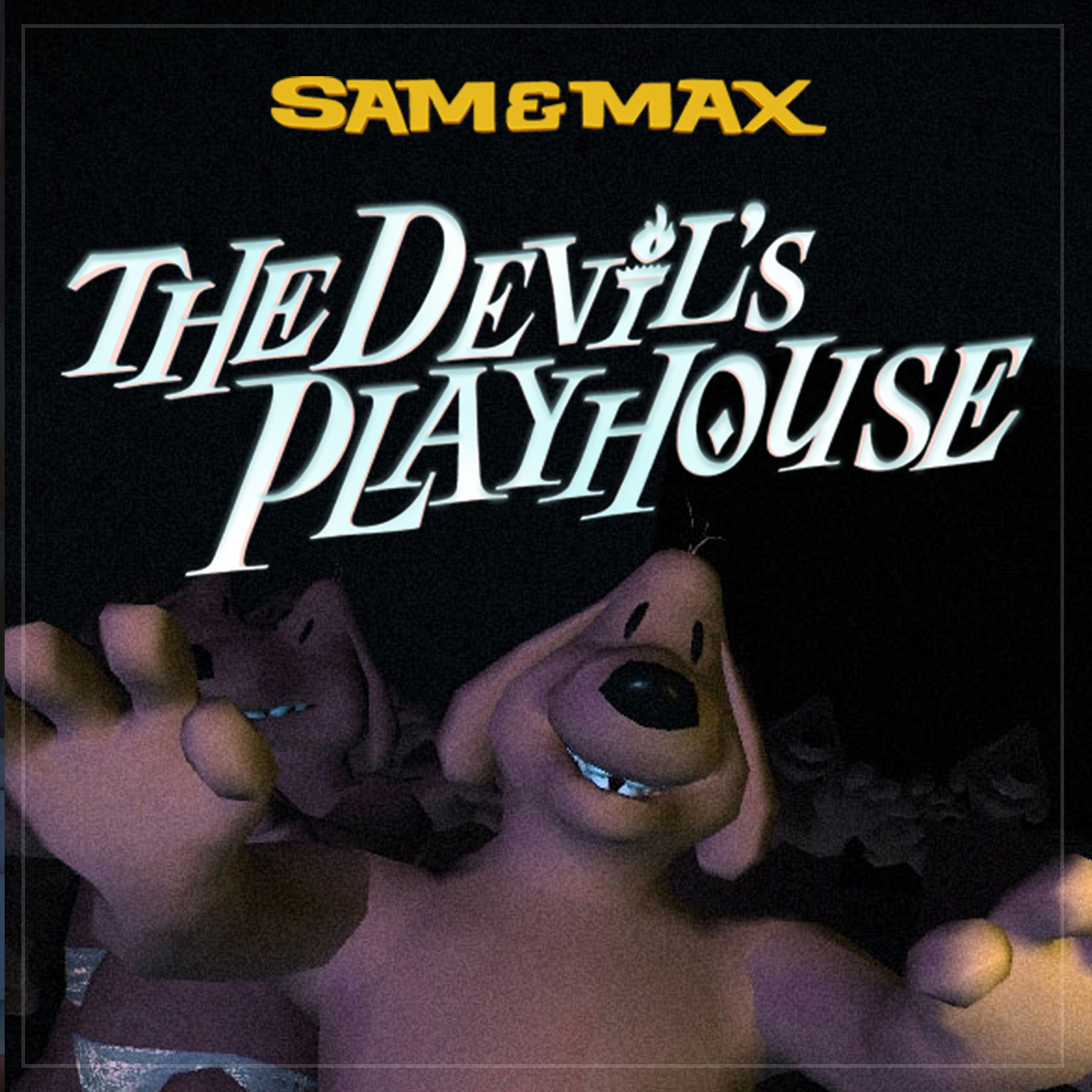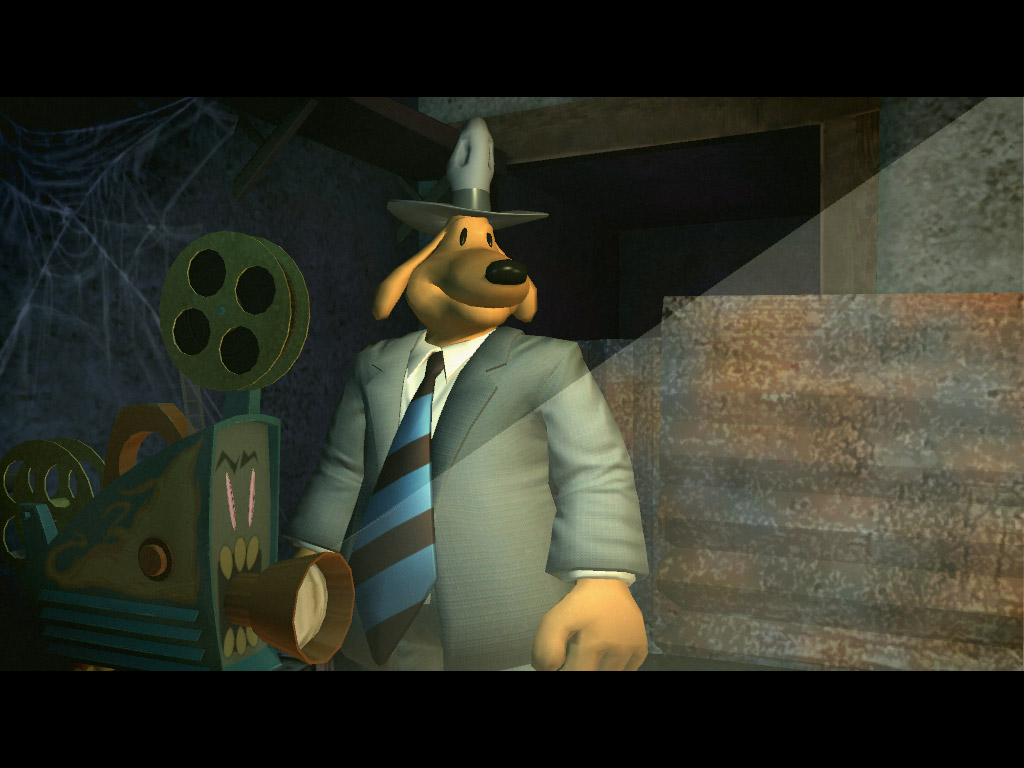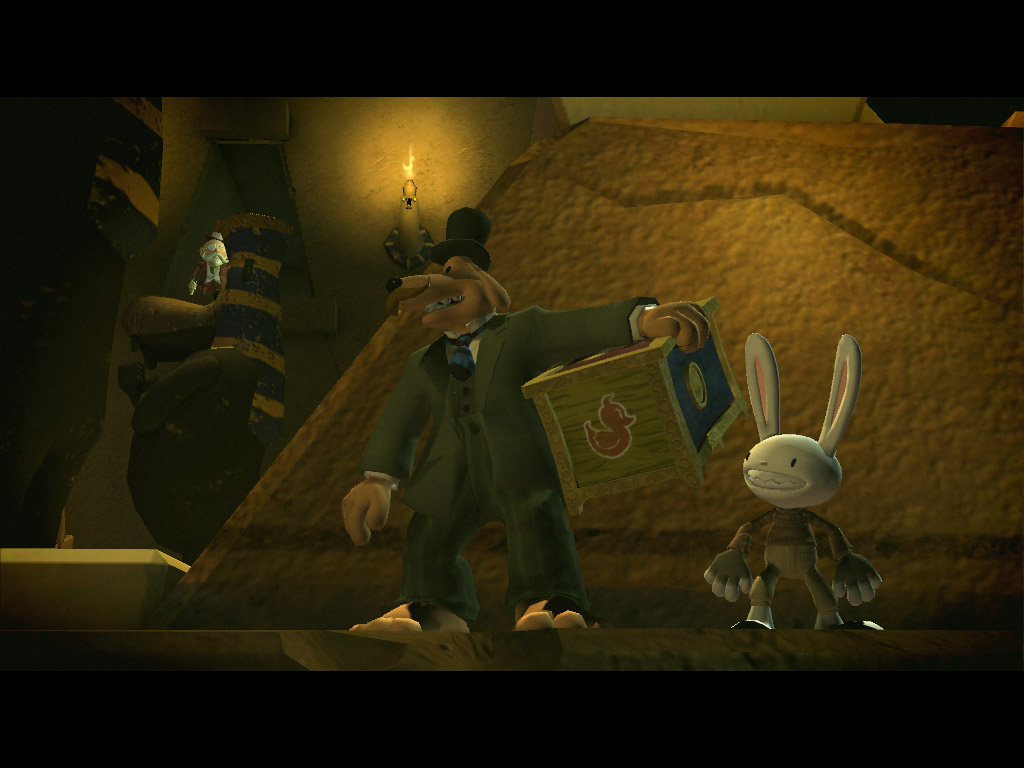Articles

Sam & Max: The Devil's Playhouse The Tomb of Sammun-Mak
Episode two of Sam & Max: The Devil's Playhouse will be out later today is out and wouldn't you know it, we've actually got a review of it written, almost as if publishing reviews for a game in conjunction with its actual release date is becoming some sort of new habit that we can't manage to shake.
Another month has arrived, and with it a new and eagerly awaited interactive case in the colorful career of the Freelance Police. The second episode of The Devil's Playhouse begins right where the season premiere left off, with Sam and Max, having just discovered a creepy chest known as The Devil's Toybox in the subbasement of their office building, coming face-to-face with a pair of skeletons that look eerily similar to themselves. The explanation for this uncanny resemblance is that the preserved remains belong to none other than Sam and Max's great grandparents Sameth and Maximus, who recovered the toybox at the behest of a creepy impresario from an Egyptian tomb guarded by a moleman family cult with the help of Maximus's bizarre psychic abilities and scads of sarcastic banter - a standard Sam & Max affair. Beside the century old bones, Sam and Max find a projector and four reels of silent film which document their ancestors' implausible quest in movie form, revealing how the equally inseparable partners met their grisly fate back in 1902, and maybe a few new hints about that sinister and ever-developing uber plot which the omniscient narrator is always on about.
With this latest episode, Telltale continues to nail Purcell's off-kilter universe, delivering a quality, mayhem-laden story infused with crackling dialog with an expertise that suggests it's all second nature to them by now. Nevertheless, I think the aspect of The Tomb of Sammun-Mak that will - or should - get people talking the most is its design. As with The Penal Zone, the episode centers its gameplay around an arsenal of psychic powers wielded by Max, or Maximus, in this case, as you will almost exclusively be controlling the actions of the duo's ancestors, whose story is being watched (and occasionally commented on) by the audience of their modern counterparts. The three toys of power unlocked by Max over the course of this episode are all new, and while that means you won't be meddling with Future Vision here, manipulating time is very much an integral part of the proceedings. The "starring" power of this episode is Astral Projection, which when activated causes the camera to pull back to the younger generation watching the flick and allows them to change to another reel, jumping to a different point in the celluloid journey.

See, in watching the movie's four segments, Sam and Max often find that the plot outcomes are incomplete or otherwise unsatisfactory, and as the player, it's your job to see each quarter of the film to proper completion, a task that often requires switching to an earlier or later reel (something you can do at any time) in order to gain insight necessary to progress in another. This structure, which is not at all unlike Day of the Tentacle conceptually, permits The Devil's Playhouse to continue to exhibit some truly fun and clever puzzle design, and satisfies the predilection for nonlinear storytelling that Telltale has enthusiastically imbued this series with since its second season. Like was the case with The Penal Zone, the puzzles do not (thankfully) completely abandon the tradition of inventory based conundrums, but the challenges being rooted primarily in the psychic powers - which also include Psychic Ventriloquism, wielded via a disturbing-looking prop dummy named Charlie Ho-tep that Maximus tends to misuse for laughs, and Can o' Nuts, a means for the heroes to temporarily conceal themselves - makes for an experience that is more compelling and consistently satisfying than strict adherence to more tired point'n'click conventions might have allowed for.
Surprisingly, none of the supporting cast from The Penal Zone returns for 302, although more than a few characters from the previous season do in the form of various factions who aim to beat Sameth and Maximus to the well-protected prize, at least one of whom I can safely say you won't see coming. Telltale effectively eliminates any sense of fatigue that might have been a risk with the liberally employed cameos by having a good deal of fun with the way they tie the backstories of the reprised characters with Sameth and Maximus's cross-continental journey for the toybox (which includes a round trip on the "Disorient Express" that fans of classic whodunit capers will adore), and while I won't spoil the inventive ways they've accomplished this, the results are amusing and unexpected.

With each batch of episodes they produce for new or returning licenses, Telltale has a way of raising the bar in the area of presentation, and arguably the leap was never so great as with The Devil's Playhouse, whose first episode boasted drastically improved visuals and far more dynamic camera work compared to the previous seasons, allowing The Penal Zone to more faithfully capture the grit and grime of the comics while effectively evoking the feeling of a 70s schlock film (with a bit of classic detective noir thrown in), an appropriate influence that is serving well as the stylistic backbone of this third season. The second episode follows suit, with the same caliber of detailed environments, splendid animation, striking choreography, incomparable voice acting, and, of course, a truly fabulous score by Jared Emerson-Johnson, all lending this season an engrossing and distinctly cinematic atmosphere to a degree that simply wasn't possible before. I suppose I could cite the individual flourishes that particularly tickled me, but the highest praise I can really give to the way The Tomb of Sammun-Mak looks and sounds is to simply say that it is of the ever increasing level of Telltale quality you've come to expect.
If Telltale Games has a flagship franchise, there's no question that Sam & Max would be it, and even with only two of its five episodes out the door, the The Devil's Playhouse makes it pretty clear as to why. The two highly adaptable comic book characters were always treated well by the studio, but arguably the license's initial foray from the developer was, by necessity, as much about laying a foundation for the industry's first truly successful episodic endeavor as it was an undivided commitment to producing the greatest game adaptations possible for the chaotic crime fighters. As more installments get made, however, the format is returning the favor to the characters with increasing generosity. Sure, the pair and their madcap adventures are an innately good fit for episodes, but it feels like in addition to continual refinement that comes naturally with experience, Telltale is still finding potential to realize in their format, an approach that is simultaneously a serialization and an epic whole, and the series is consequently hitting new strides with each outing rather than wearing thin. Telltale's willingness to innovate is no doubt related to the renewed energy and freshness the franchise is enjoying, and with The Tomb of Sammun-Mak, The Devil's Playhouse continues to unfold as the studio's most impressive achievement yet.